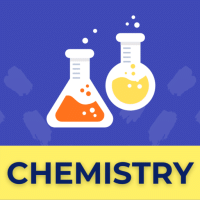Class 11 Exam > Class 11 Questions > CH3CH2CH2Br in presence of aq.KOH forms?
Start Learning for Free
CH3CH2CH2Br in presence of aq.KOH forms?
Most Upvoted Answer
CH3CH2CH2Br in presence of aq.KOH forms?
Reaction of CH3CH2CH2Br with aq.KOH
When CH3CH2CH2Br (1-bromopropane) is reacted with aqueous potassium hydroxide (KOH), it undergoes a nucleophilic substitution reaction known as an SN2 reaction. This reaction results in the formation of an alcohol, CH3CH2CH2OH (1-propanol), and the potassium salt of bromide, KBr.
SN2 Reaction Mechanism
The SN2 reaction mechanism involves a direct attack of the hydroxide ion (OH-) on the carbon atom bonded to the bromine atom. This attack occurs from the backside of the carbon-bromine bond, leading to the inversion of the stereochemistry.
Reaction Steps:
1. Nucleophilic Attack: The hydroxide ion acts as a nucleophile and attacks the carbon atom bonded to the bromine. This attack displaces the bromine atom from the carbon, forming a transition state.
2. Transition State: In the transition state, the hydroxide ion partially bonds to the carbon atom, while the bromine atom begins to detach. This transition state is a high-energy species.
3. Bond Formation: As the bromine atom fully detaches, a new bond forms between the carbon and the hydroxide ion. This leads to the formation of 1-propanol.
4. Product Formation: The final product is 1-propanol, an alcohol, in which the hydroxide ion has replaced the bromine atom. Additionally, potassium bromide (KBr) is formed as a byproduct.
Overall Reaction Equation:
CH3CH2CH2Br + KOH → CH3CH2CH2OH + KBr
The presence of aqueous KOH facilitates the reaction by providing hydroxide ions as the nucleophile. The potassium ion (K+) from KOH does not participate in the reaction but forms a salt with the bromide ion.
In conclusion, the reaction of CH3CH2CH2Br with aqueous KOH results in the substitution of the bromine atom by a hydroxide ion, leading to the formation of 1-propanol and potassium bromide. This reaction follows the SN2 mechanism, where the hydroxide ion attacks the carbon atom bonded to the bromine from the backside.
When CH3CH2CH2Br (1-bromopropane) is reacted with aqueous potassium hydroxide (KOH), it undergoes a nucleophilic substitution reaction known as an SN2 reaction. This reaction results in the formation of an alcohol, CH3CH2CH2OH (1-propanol), and the potassium salt of bromide, KBr.
SN2 Reaction Mechanism
The SN2 reaction mechanism involves a direct attack of the hydroxide ion (OH-) on the carbon atom bonded to the bromine atom. This attack occurs from the backside of the carbon-bromine bond, leading to the inversion of the stereochemistry.
Reaction Steps:
1. Nucleophilic Attack: The hydroxide ion acts as a nucleophile and attacks the carbon atom bonded to the bromine. This attack displaces the bromine atom from the carbon, forming a transition state.
2. Transition State: In the transition state, the hydroxide ion partially bonds to the carbon atom, while the bromine atom begins to detach. This transition state is a high-energy species.
3. Bond Formation: As the bromine atom fully detaches, a new bond forms between the carbon and the hydroxide ion. This leads to the formation of 1-propanol.
4. Product Formation: The final product is 1-propanol, an alcohol, in which the hydroxide ion has replaced the bromine atom. Additionally, potassium bromide (KBr) is formed as a byproduct.
Overall Reaction Equation:
CH3CH2CH2Br + KOH → CH3CH2CH2OH + KBr
The presence of aqueous KOH facilitates the reaction by providing hydroxide ions as the nucleophile. The potassium ion (K+) from KOH does not participate in the reaction but forms a salt with the bromide ion.
In conclusion, the reaction of CH3CH2CH2Br with aqueous KOH results in the substitution of the bromine atom by a hydroxide ion, leading to the formation of 1-propanol and potassium bromide. This reaction follows the SN2 mechanism, where the hydroxide ion attacks the carbon atom bonded to the bromine from the backside.
Community Answer
CH3CH2CH2Br in presence of aq.KOH forms?
CH3CH2CH2OH

|
Explore Courses for Class 11 exam
|

|
Question Description
CH3CH2CH2Br in presence of aq.KOH forms? for Class 11 2025 is part of Class 11 preparation. The Question and answers have been prepared according to the Class 11 exam syllabus. Information about CH3CH2CH2Br in presence of aq.KOH forms? covers all topics & solutions for Class 11 2025 Exam. Find important definitions, questions, meanings, examples, exercises and tests below for CH3CH2CH2Br in presence of aq.KOH forms?.
CH3CH2CH2Br in presence of aq.KOH forms? for Class 11 2025 is part of Class 11 preparation. The Question and answers have been prepared according to the Class 11 exam syllabus. Information about CH3CH2CH2Br in presence of aq.KOH forms? covers all topics & solutions for Class 11 2025 Exam. Find important definitions, questions, meanings, examples, exercises and tests below for CH3CH2CH2Br in presence of aq.KOH forms?.
Solutions for CH3CH2CH2Br in presence of aq.KOH forms? in English & in Hindi are available as part of our courses for Class 11.
Download more important topics, notes, lectures and mock test series for Class 11 Exam by signing up for free.
Here you can find the meaning of CH3CH2CH2Br in presence of aq.KOH forms? defined & explained in the simplest way possible. Besides giving the explanation of
CH3CH2CH2Br in presence of aq.KOH forms?, a detailed solution for CH3CH2CH2Br in presence of aq.KOH forms? has been provided alongside types of CH3CH2CH2Br in presence of aq.KOH forms? theory, EduRev gives you an
ample number of questions to practice CH3CH2CH2Br in presence of aq.KOH forms? tests, examples and also practice Class 11 tests.

|
Explore Courses for Class 11 exam
|

|
Signup for Free!
Signup to see your scores go up within 7 days! Learn & Practice with 1000+ FREE Notes, Videos & Tests.























